Book choices for today:
Watch it Grow Pumpkin Barrie Watts
My Pumpkin Julia Noonan
It’s Pumpkin Time Zoe Hill
How Many Seeds in a Pumpkin? Margaret McNamara
Pumpkin Circle George Levenson
Pumpkin Day Nancy Wallace
Too Many Pumpkins Linda White
Ten Orange Pumpkins Stephen Savage
Christopher Columbus 1492 Barry Smith
Botany: (first circle)
Need for lesson – Pumpkin sequence cards (Plants – Macmillan).
Botany 12
Let’s review parts of the plant that we talked about. What job do the roots have? Roots take water and minerals from the soil for the plant. What about the stem? Stems carry the water and minerals up the stem to the leaves and flower part of the plant. I have some pictures for us to look at, and as we do I am going to tell you a story.
A little boy named Jonathan found a seed. He wasn’t sure what kind, so he decided to plant it to find out. Jonathan carefully placed the seed in a small hole he had made in one corner of the garden. He covered the seed with the sun-warmed soil and gently watered it. It wasn’t long before Jonathan noticed a sprout poking through the ground, but he still didn’t know what kind of plant it was.
A few weeks passed. Jonathan watched as the plant continued to grow, and he noticed something unusual. The stem didn’t grow straight up like most of the other plants in the garden. Instead, it grew along the ground. He also noticed that there were curly little shoots growing out of the stem. He learned later that these shoots are called tendrils and that a plant that grows along the ground is called a vine.
One warm sunny morning Jonathan came out to check his mystery plant. He saw two pale orange flowers that had just opened. After looking at them more carefully, he noticed that they were not exactly alike. How odd! Then, he brushed his hand against one of the leaves. How prickly it was!
About a week later, Jonathan noticed that the flowers had shriveled up, but now there was a round fruit growing from the base of one of the flowers. The fruit was quite small, but somehow it reminded Jonathan of something he had seen before.
The weeks passed quickly. The leaves of the mystery plant grew larger, its stem grew thicker and stronger, and the round fruit was now a little larger than his sister’s softball. Jonathan was almost sure that he knew what the plant was.
Jonathan looked at the calendar. it was October. By now he knew what was growing in his garden. Do you? It was a pumpkin. It weighed 30 pounds!
This pumpkin plant had flowers on it. What happened to the flowers? Some plants that have flowers, are where a fruit or vegetable will grow in its place when it shrivels up like in the story. Isn’t that amazing! October is the time for the pumpkins to be harvested from gardens. They have all grown and are ready to picked!
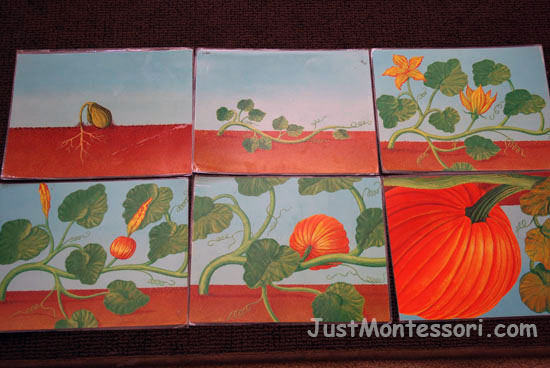
Additional Works:
1-10 Pumpkin Counting – Children put numerals 1-10 in order across their mat and count out the pumpkins.
1-10 Pumpkin Counting – I found these on kidssoup.com and colored them and made them into a counting work.
Pumpkin Sequence – This is also from kidssoup.com. Children can put the pumpkin seed story in order ending with pumpkin soup.

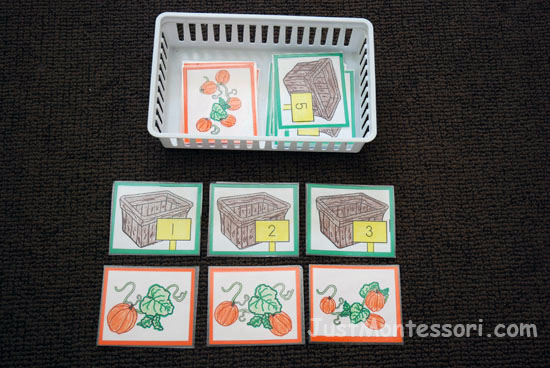
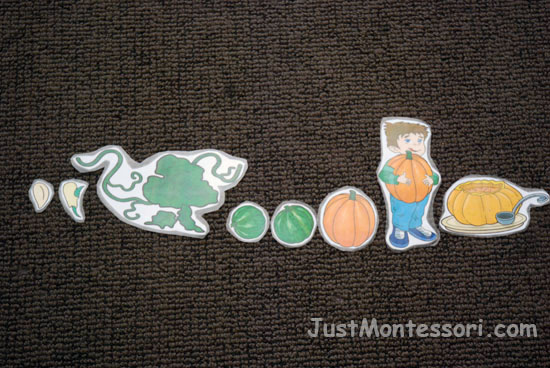
Practical Life:
Pumpkin Scrubbing
Pumpkins Transfer – Tongs
Eye-Dropper Transfer
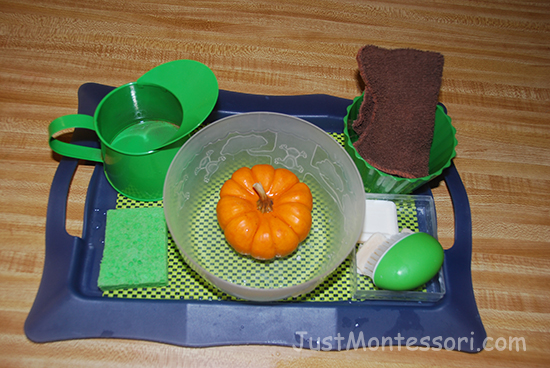

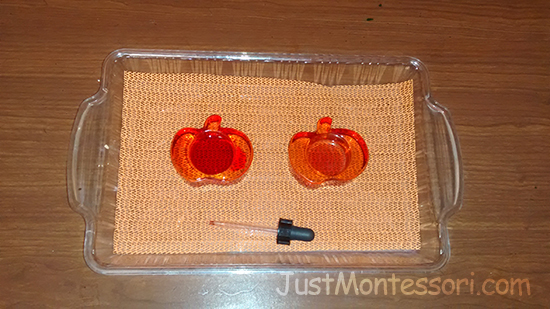
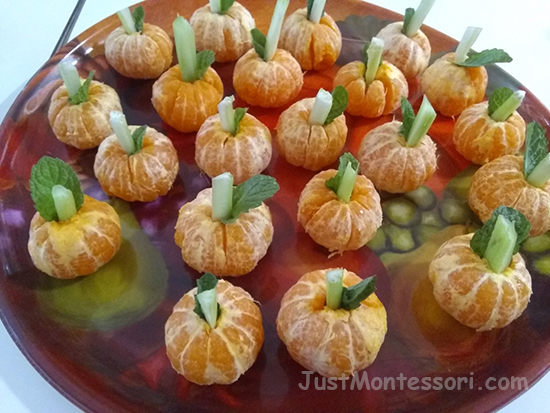
Art:
Tissue Paper Pumpkins – Have pre-cut paper pumpkin shapes, brown stem shapes, and orange tissue paper cut into small squares. Children can paste the squares on the pumpkin shapes and add the stem.
Pumpkin Paper Bags – Provide white paper bags, orange markers, crayons, or paint, pre-cut leaf shapes, pipe cleaners to make the tendrils, and tissue for stuffing the bags. Children can decorate their bag and then stuff them with tissues. Twist the end and hold it together with the pipe cleaner tendril and add a leaf shape.
Pumpkin Sequence – I cannot remember where this is from, but when I do I will post it! They come out real nice. It is suggested that an orange paper plate be used, we didn’t have any, so I just had the children paint a white plate orange instead.
Pumpkin Painting – This idea is from a teacher I worked with. She added pumpkin spice to the paint. The children enjoyed painting pumpkins and the smell of the paint!
Pumpkin Sequence – This worksheet is from a science workbook. Children cut out the pieces at the bottom of the page and glue them in order from 1-6 and can color them as well.
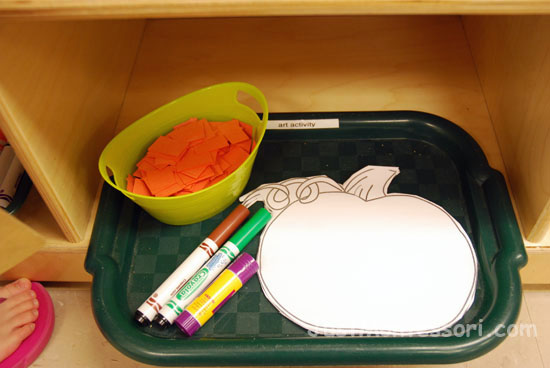
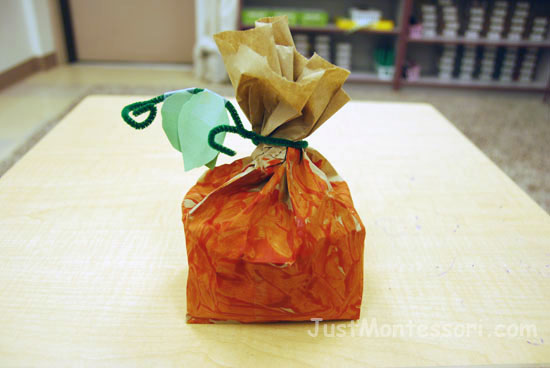
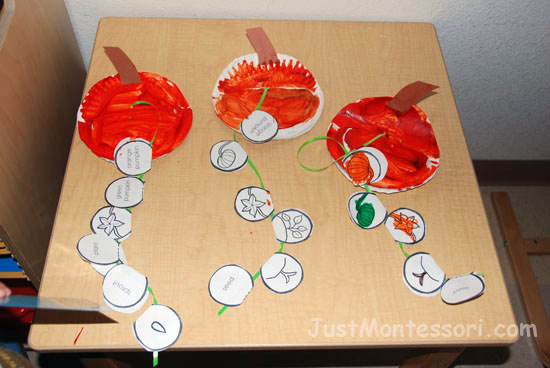
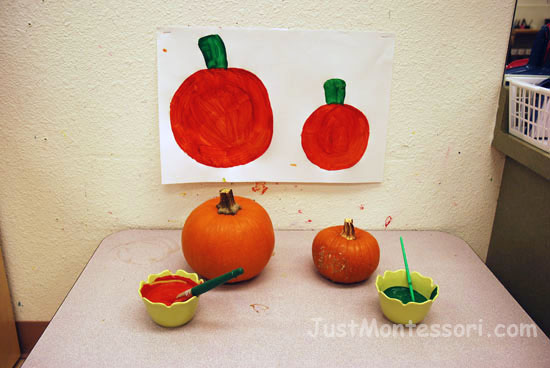
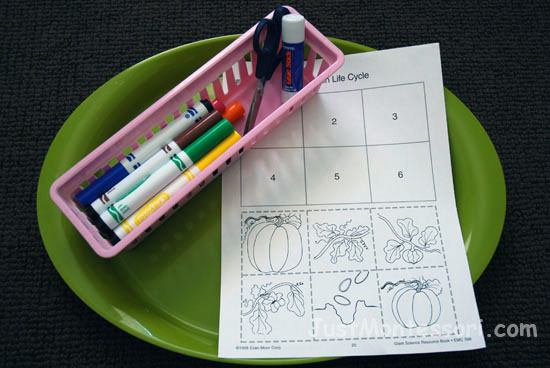
Additional Work:
These give you more art ideas, books, and a poem game as additional work choices. For the pumpkin game, I made the pumpkins and laminated them. Pumpkin leaves are from a stamp that children paint and make prints of and then cut out. The paint also has pumpkin spice added to it.
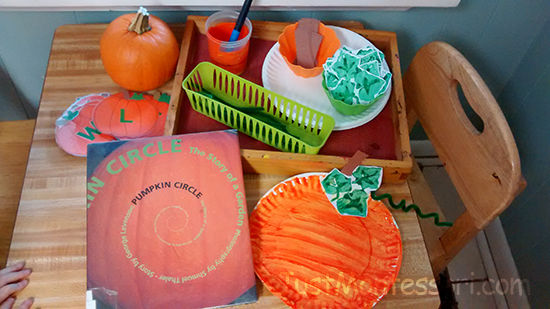


Pumpkin Poem/Game – Children choose one card from a basket or from cards placed face down on a mat. They say the poem as they choose a pumpkin and then say its letter sound. I made an apple set with lowercase letters and now the pumpkins have capital letters.
Pumpkin Poem
Pumpkin pumpkin nice and round
Pick a pumpkin and make its sound.
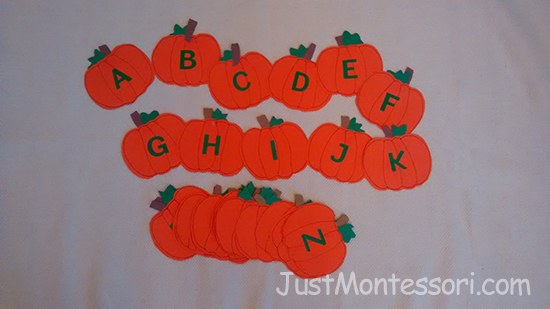
Second Circle:
Need for Lesson – Christopher Columbus coloring or other art/activities and a Continent Globe. You may choose any person from the past, perhaps local to your area, or a history lesson you would like.
History 3
It has been fun learning about things that happened in the past. What do we call it when we learn about things form the past? History. Today we are going to find out about a person from the past and his name was Christopher Columbus. He was a man who lived on the continent of Europe. He was a sailor.
Back in the past when he lived there were no cars or planes. Today we can fly from continent to continent in one day, but back when Columbus lived, it would take many months, even years to travel to another continent in a boat (demonstrate with globe). Columbus wanted to travel to Asia. He could get things there that they did not have in Europe, like spices for cooking and cloth for making clothes. It would take Columbus a long time to get to Asia so he had an idea to go travel this way (show on globe). He and many other people did not know the continent of North America was here.
In the year 1492 three ships sailed across the Atlantic Ocean looking for Asia. The names of the ships were the Nina, the Pinta, and the Santa Maria. They traveled for months. When they finally found land, they realized this wasn’t Asia. They had landed off the shore of two continents; North America and South America. They met new people and learned about many different things they hadn’t seen before. What an incredible journey he and the other men on the ships had!
This is a poem about Christopher Columbus: In 1492, Columbus sailed the ocean blue.
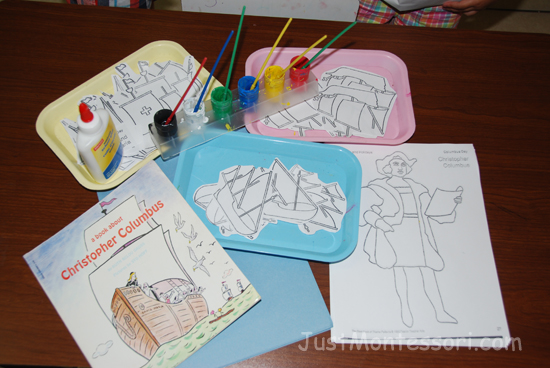

Song (CD) choices for today:
Song for October Learning is Fun with Hestia
Buy Weeks 6-10 PDF
-
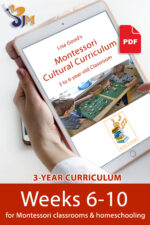 (C) Weeks 6-10$25.00
(C) Weeks 6-10$25.00


